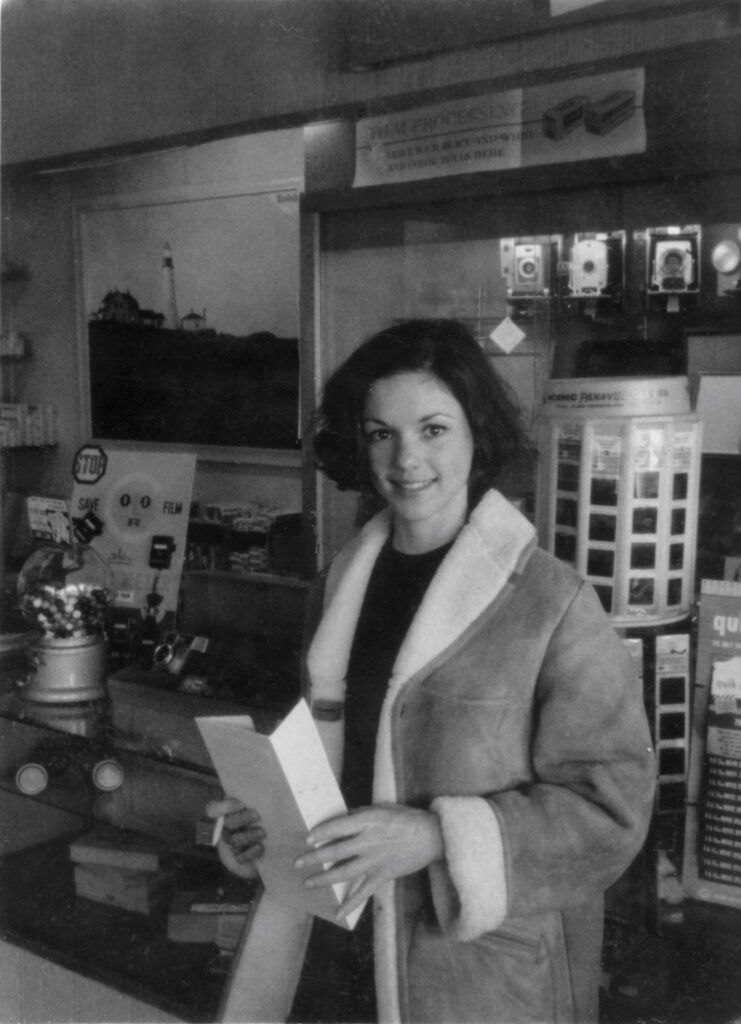Edith Minturn Sedgwick Post, Andy Warhol’s iconic Factory muse, burst onto the Manhattan art/pop culture scene in the mid 1960’s and soon became what Vanity Fair called “the avatar of Warhol’s desires.” Gorgeous, reed-thin and exceedingly rich from a family that Andy declared went “all the way back to the Pilgrims” she soon began modeling and exploded onto the scene as “Girl of The Year.” Vogue’s Diana Vreeland dubbed her a “Youthquaker,” and in 1965 when Warhol turned from pop art soup can works to film, she became his “Marilyn,” the “It girl” of the era, a status that propelled her onto the cover of Life Magazine
After appearing in multiple Warhol avant-garde films like “The Poor Little Rich Girl,” her rumored affair with Bob Dylan, reportedly caused the possessive Andy to turn on her, sending her down a destructive rabbit hole of heroin addiction and back the refuge of her family in Santa Barbara where she met her husband, Michael Post, in rehab. Their storied affair and marriage produced some of her own most important early art work, which is being offered now for the first time 51 years after her tragic death on November 16th, 1971 from a drug overdose.
A legendary figure in the art and cultural landscape of the last half-century, Edie Sedgwick’s life was captured on screen in the 2006 feature film “Factory Girl,“ starring Sienna Miller. She was also chronicled in the best-selling 1982 biography by Jean Stein and George Plimpton, “Edie, American Girl. ” Now, a collection of Edie’s early, never-before-seen artwork is available for the first time.

Art served as both escape and respite for Edith Minturn ‘Edie’ Sedgwick, the tragic actress, fashion model, and Andy Warhol superstar whose electric charm and beauty embodied the mercurial youth movement of 1960s Manhattan. Her rise and fall have become a part of pop lore, documented through page, screen, and song, casting Edie in a dual role as icon and victim of the underground art scene.
Edie’s reliance on her own art, however, was only truly revealed after her death. Jean Stein and George Plimpton’s biography Edie: An American Biography (from which we have borrowed several quotes) offers fascinating snippets into how Edie’s personal art remained a constant, ever poised to pull her back from the brink, if only for a short while. Our collection of Edie Sedgwick artwork dates from 1960 to 1970, an improbable decade of equal parts love and madness that tells Edie’s tale in a way never before seen.
“An evening with Edie would only end when Edie had go to the point of exhaustion, which would be at the end of two or three days. There’s that old Yogi axiom: the higher you go, the further you fall. We all know that. She liked walking very close to extinction, always.” John Anthony Walker
The seventh of eight children to Francis ‘Duke/Fuzzy’ Sedgwick and Alice Delano de Forest, Edie, who was nicknamed Weedles or sometimes Weasel, grew up on sprawling cattle ranches about 50 miles inland from Santa Barbara. With the exception of doctor and dental visits, Edie and her siblings never left the ranch.
‘The Sedgwicks lived in their own world. We went over sometimes, but they were hard to know. They even had their own schoolhouse. I don’t think Edie had a good friend?horses maybe.’ Wendy Wilder
The Sedgwick children did their chores on the farm, rode horses on their thousands of acres, and busied themselves with their arts and crafts. This isolation denied them a normal childhood, but it consequently nurtured their imaginations, especially so for young Edie. She made puppets by hand and became adept at drawing the array of animals living on the ranch, with horses, unequivocally, being her favorite.
‘I always thought Edie wanted to escape on her horse, but she couldn’t get off the ranch. She was penned in ‘So she could only run away on the ranch. She would just disappear into the mountains with her horse, Chub, and you never knew where she was. Then she’d come back mellowed out.’ Jonathan Sedgwick
Edie was fastidious and fussed over minute details. Her meticulousness, coupled with a strict body image insisted upon by her imperious father, Fuzzy, developed into an eating disorder. As a teenager, she was removed from boarding school due to her anorexia and bulimia and sent to the east coast to attend St. Timothy’s in Maryland before transferring to psychiatric hospitals in Connecticut and New York. Her focus on artwork during occupational therapy sessions guided her to Cambridge, Massachusetts, where she studied art with her cousin Lily Swann Saarinen ‘wife of architect and industrial designer Eero Saarinen’ in the fall of 1963.
‘She was the most talented young person I’ve taught art to ‘Pretty soon my life was Edie because I couldn’t do anything else. She worked frantically. She wanted to do a horse. She said she’d ridden them all her life and knew every inch of them’ So she worked on this one horse. It looked like a T’ang horse. It took her all winter.’ Lily Swann Saarinen
‘I saw that horse a hundred million billion times! It seemed to me that it never changed form. It was always just perfect. Edie’d say ‘Look! Look what I’ve done to the leg!’…But I could never see what she’d done. The horse went through the whole year. It just wouldn’t end, that horse.’ Ed Hennessy
Edie frequented Adams House at Harvard and became a regular at hotspots like the Casablanca where she fell into the crowd of intellectuals and eccentrics that frequented the Square’s artistic community.
‘I’ll give you a scene of Edie. One day I was in the Widener Library Reading Room at Harvard. It was just essential that I study my notes for an hour exam. Edie was with me. I don’t know why. To get out of the rain. She started to draw in my notebook. It was almost as if you’d given a child a crayon and a piece of paper to keep her quiet because she had no one to play with. She did this perspective of the Reading Room which was phenomenal. Absolutely phenomenal. She did the whole length of Widener with its ceilings and vaultings, a special rendering of that sort of cavernous place it is.’ John Anthony Walker
Edie outgrew Cambridge and the 21-year-old left for New York City in the summer of 1964, living with her grandmother before moving into an apartment between Fifth and Madison. At some point, she drew a huge horse above her bed. A little later, in early 1965, she met Andy Warhol.
“I think Edie was something Andy would like to have been; he was transposing himself into her a la Pygmalion’ Andy Warhol would have liked to have been Edie Sedgwick.” Truman Capote
The Factory, and Andy, soon found their ‘superstar’ in Edie. Her energy was contagious and her charm and beauty mesmerized even the most snobbish of poets, artists, and fashionistas. With Andy’s influence, Edie’s modeling career ignited and she broke into the mainstream, appearing in top magazines like Vogue and Life. The pair made numerous films together in 1965, including Vinyl, Horse, Kitchen, and Poor Little Rich Girl, among others.
“I used to hang around her apartment with her. Agonizing’ even to me. Chaos! Piles of clothes on every piece of furniture. Easels. Canvases’ she was painting at the time. There was a portfolio of very small scrunched-up rodent drawings with funny little monster men. A top hat on one of them. Bleak little pictures. Art was her ostensible thing, her reason for being in New York, according to what she told her parents.” Sandy Kirkland
And then it ended. Edie was hurting from drug abuse and New York and its enablers and hanger-ons had little to offer in the way of healing. She returned to California in 1969 and was soon admitted to the Santa Barbara Cottage Hospital where she met fellow patient and future husband Michael Post. They married in the summer of 1971 and, for several months, Edie was sober. She relapsed on prescription pain medication and overdosed from a concoction of booze and pills on November 16, 1971, passing away in her bed at the age of 28.
“Anyone who gets involved with the world of fashion has her own self-destruct built into it. The constant beat, beat, beat, and this girl wandering through it, the total victim, believing it all and destroyed by it through no fault of her own.” Truman Capote
Given Edie’s short life and restless, unpredictable nature, holographic material from her remains nearly unobtainable. As such, this unprecedented collection of her own personal artwork, created during her most influential and turbulent period, represents a unique and singular event never again to be repeated.


